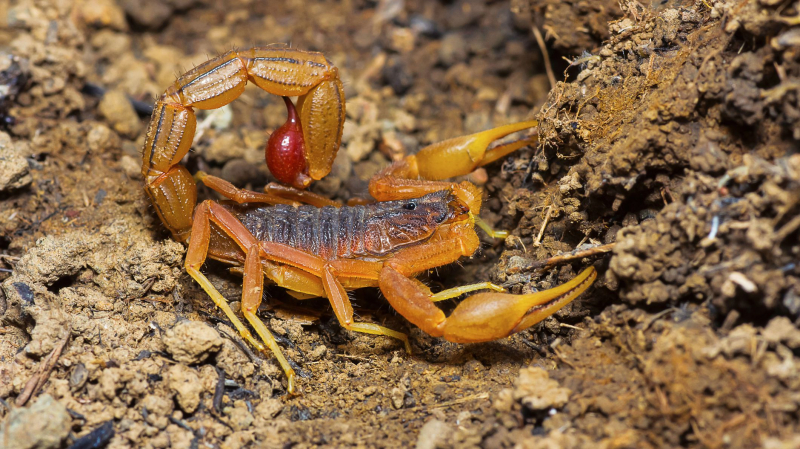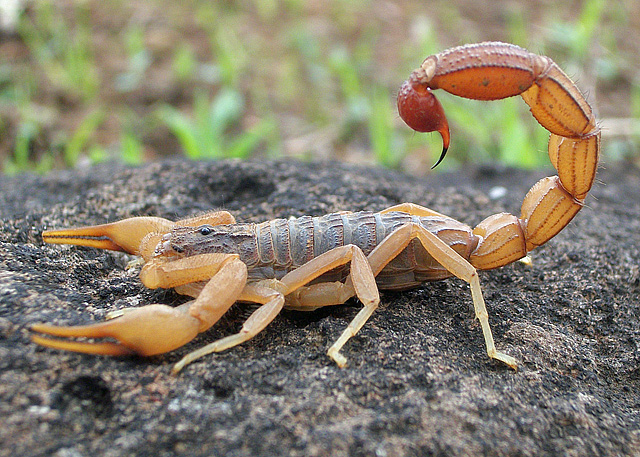The Indian red scorpion
A species of scorpion belonging to the Buthidae family is the Indian red scorpion, often called the eastern Indian scorpion. The majority of India, eastern Pakistan, the eastern lowlands of Nepal, and most recently Sri Lanka are affected.
Body length ranges from 50 to 90 mm. the proximal edges of the pedipalp fingers on males are flexed. Pedipalps masculine manus is wider than female. Males have 30 to 39 pectinal teeth, whereas females have 27 to 34. Yellow and reticulated chelicerans are present. Legs and the metasoma are sparingly hirsute, compared to the highly hirsute pedipalps. Pedipalps patella is coated in short setae. Darker than the rest of the body, the mesosoma. Segments of metasomal have dark ventral carinae. Chela lacks carinae. thickly and extremely finely granular dorsum Two small, unnoticeable marginal carinae are present on the dorsum. Granulated Telson is used.
India is home to 86 different kinds of scorpions. 50 of these are fatal. The 23 cm long gigantic forest scorpion, although being the largest scorpion in the world, isn't particularly venomous.
The smaller Indian red scorpion, though, is known to claim the lives of 50 to 80 individuals each year in India. Given that its venom induces pulmonary edema, it is regarded as the most hazardous scorpion in the entire globe as well as one of the most dangerous creatures in India. Prazosin is used to cure an Indian red scorpion sting.













